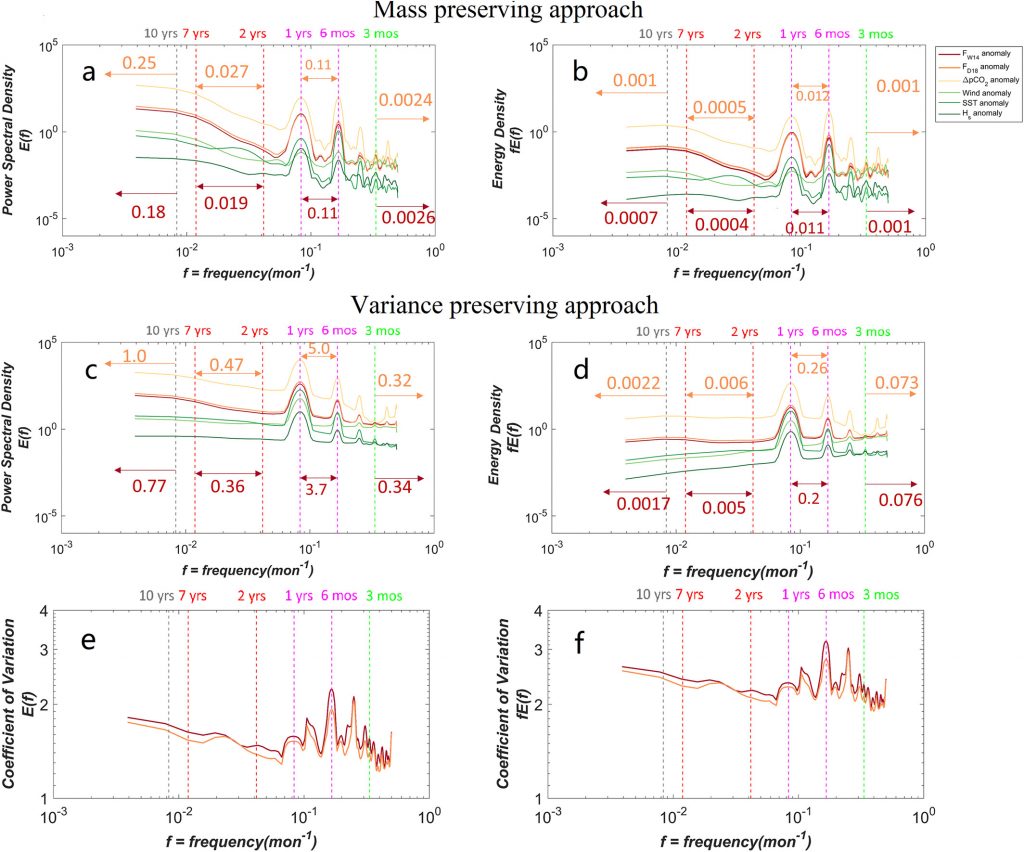The number of carbon dioxide (CO2) molecules per unit surface area per unit time that enter the ocean surface from the atmosphere is quantified by the air-sea CO2 flux (F). These CO2 molecules impact many chemical and biological properties within the ocean. Yet, the direct controls on how many molecules can possibly be exchanged between the atmosphere and the ocean surface depend on several environmental factors such as wind speed at some reference height, the amount of CO2 molecules in the atmosphere and in the water (or their imbalance ∆pCO2), the wave height, and sea surface temperature. These environmental factors vary on many time scales such as daily, monthly, seasonal, annual, inter-annual, and decadal. The work demonstrates that the CO2 gas exchange is dominated by the wind effect on subseasonal time scales, while on longer time scales, the ∆pCO2 term, closely related to the variability of both atmospheric and oceanic CO2, emerges as a leading driver.
See:
Gu, Y., Katul, G. G., Cassar, N. 2023. Multiscale temporal variability of the global air-sea CO2 flux anomaly. JGR Biogeosciences, https://doi.org/10.1029/2022JG006934.



You must be logged in to post a comment.